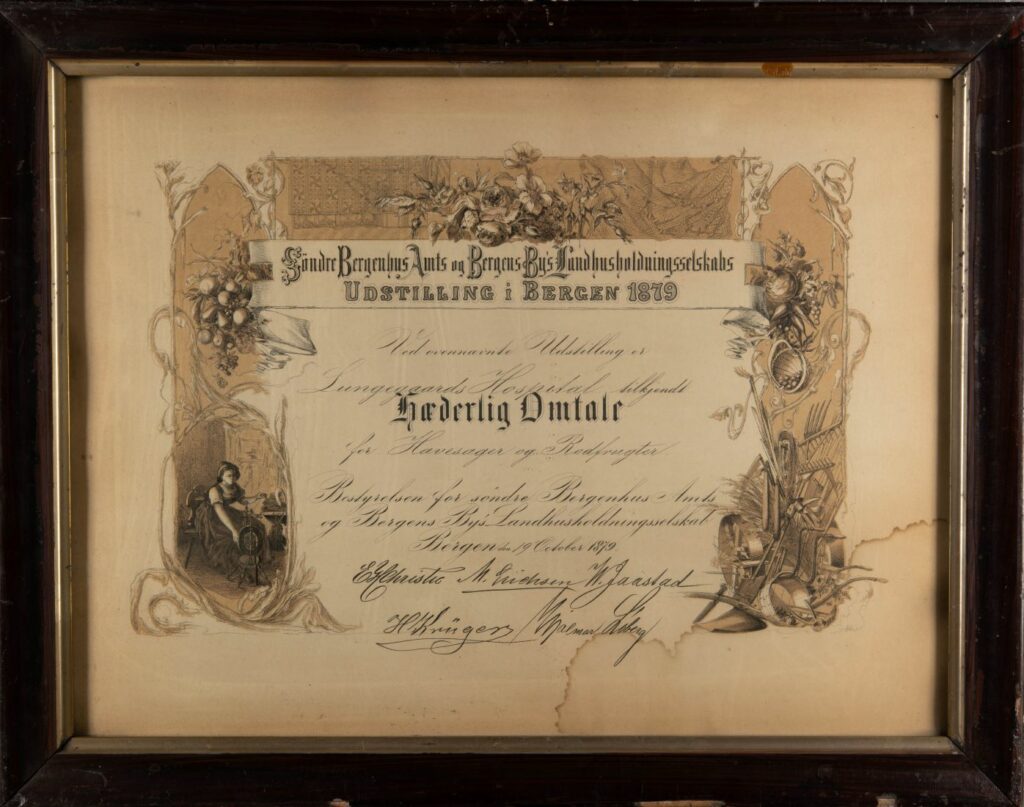Lungegård Hospital park
There was a large park around Lungegård Hospital, where patients could spend time outdoors. The park extended all the way down to Store Lungegårdsvann bay, where there was also a boathouse and boats. The park was part of an overall plan for the hospital, whereby residents were able to exercise and get some fresh air.
The park can be seen in pictures of the hospital. It had a promenade in front of the main entrance, and various paths, large trees and flower beds. In the middle of the garden, in front of the main facade to the north, there was also a garden pond with a fountain. We can see in the oldest photos that there was also a small gazebo on the hilltop towards Store Lungegårdsvann bay.
Parts of the garden were probably used at some point to grow vegetables, probably both to keep the residents busy and to contribute to the housekeeping. Little is known about this, but there are two certificates dating from the 1870s from when the hospital received a prize at a local vegetable show. In 1871, they received second prize for cabbages at the show.
Part of the hospital’s original park disappeared when the Bergen Railway track was moved from the west side to the east side of Store Lungegårdsvann bay in 1913. In 1953, some 40 years later, the rest of the park, the hospital building and the hilltop on which it was situated disappeared when the area used by the railway was expanded.
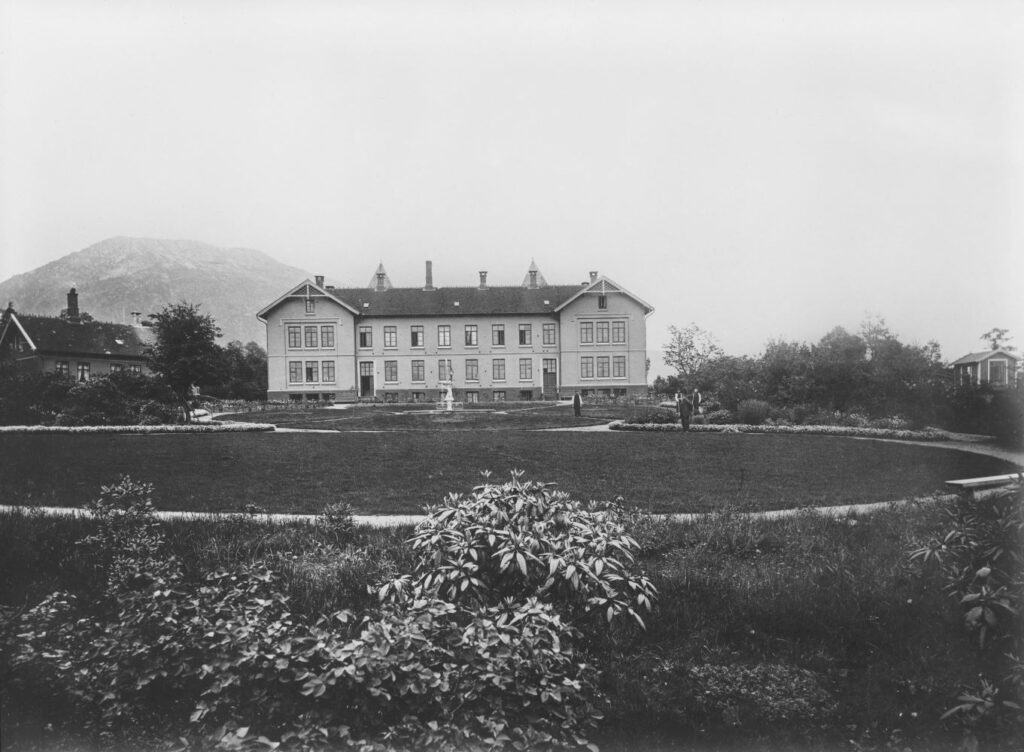
Photo: Knud Knudsen. The University of Bergen Library.
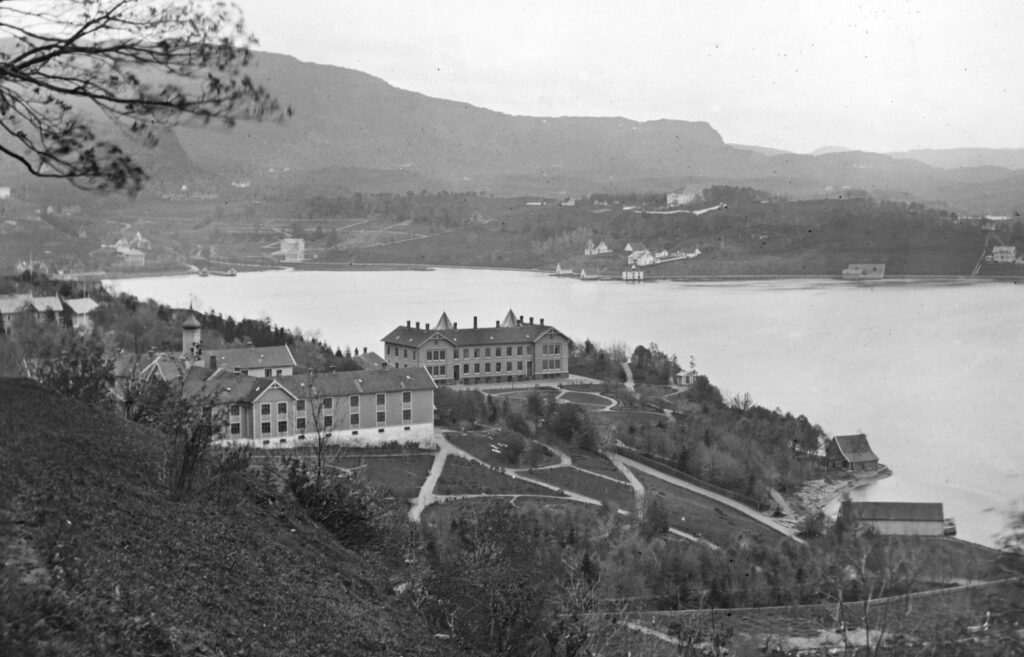
Photo: Knud Knudsen. Detail. The University of Bergen Library.
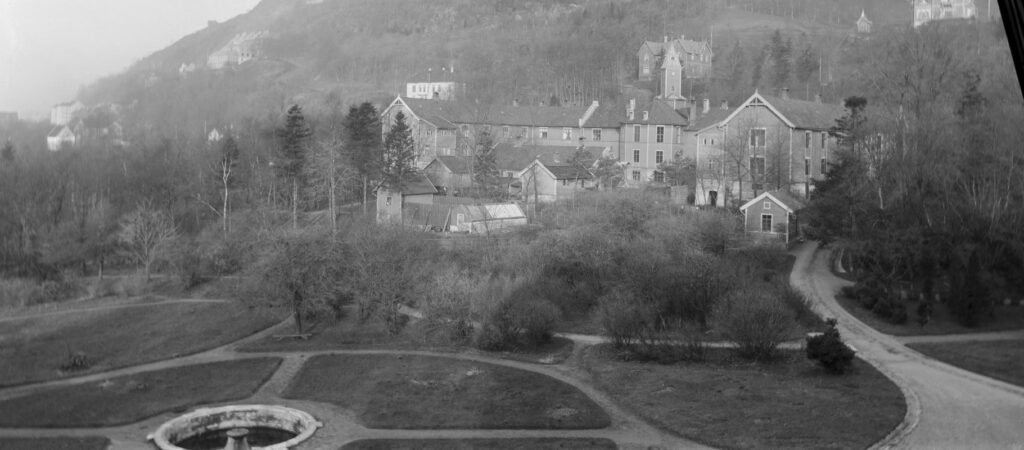
Photo: Knud Knudsen. Detail. The University of Bergen Library.
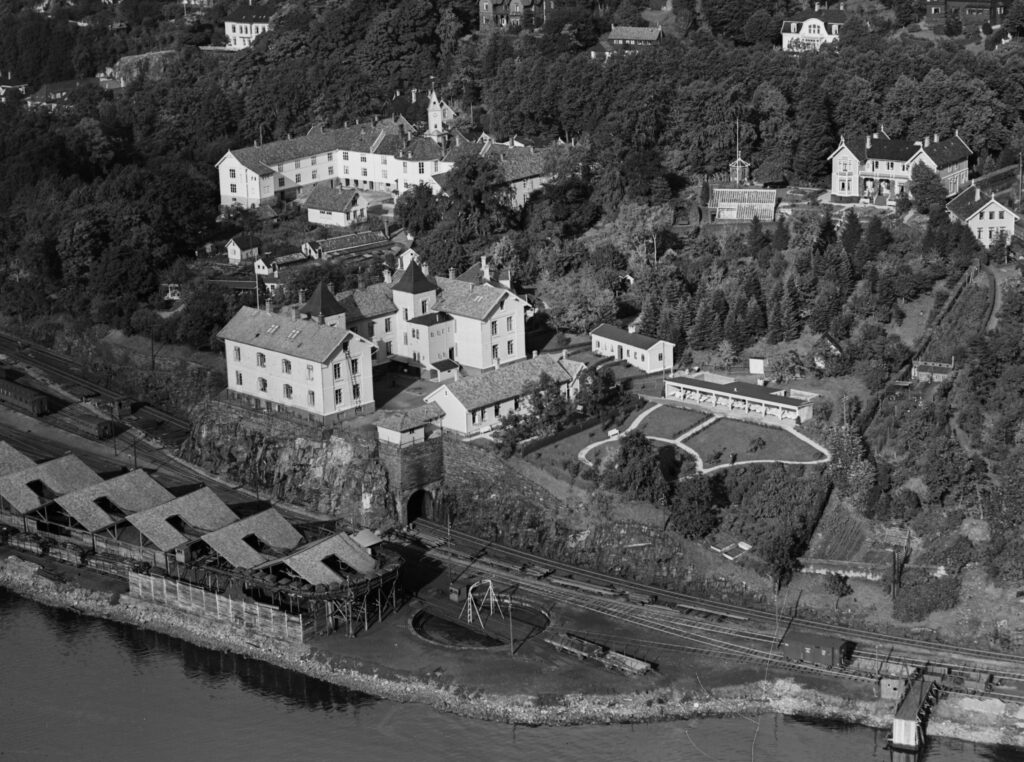
Photo: Widerøe’s Flyveselskap A/S. Detail. The University of Bergen Library.
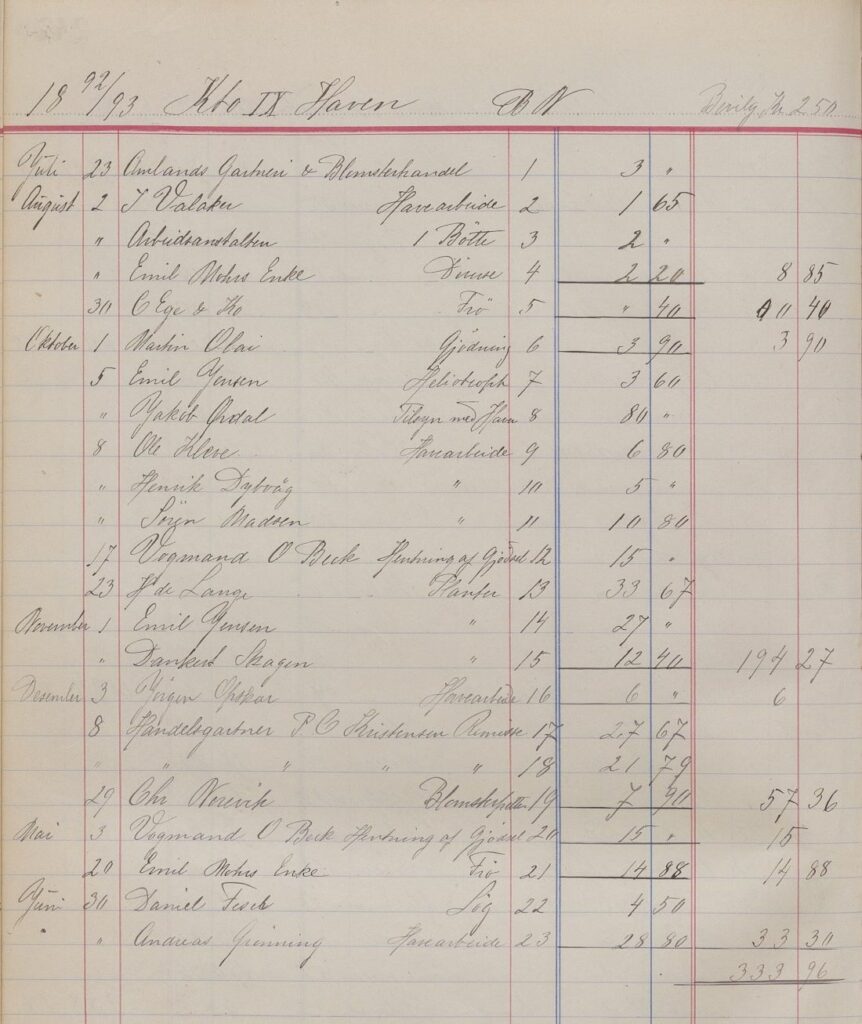
The Regional State Archives of Bergen.
